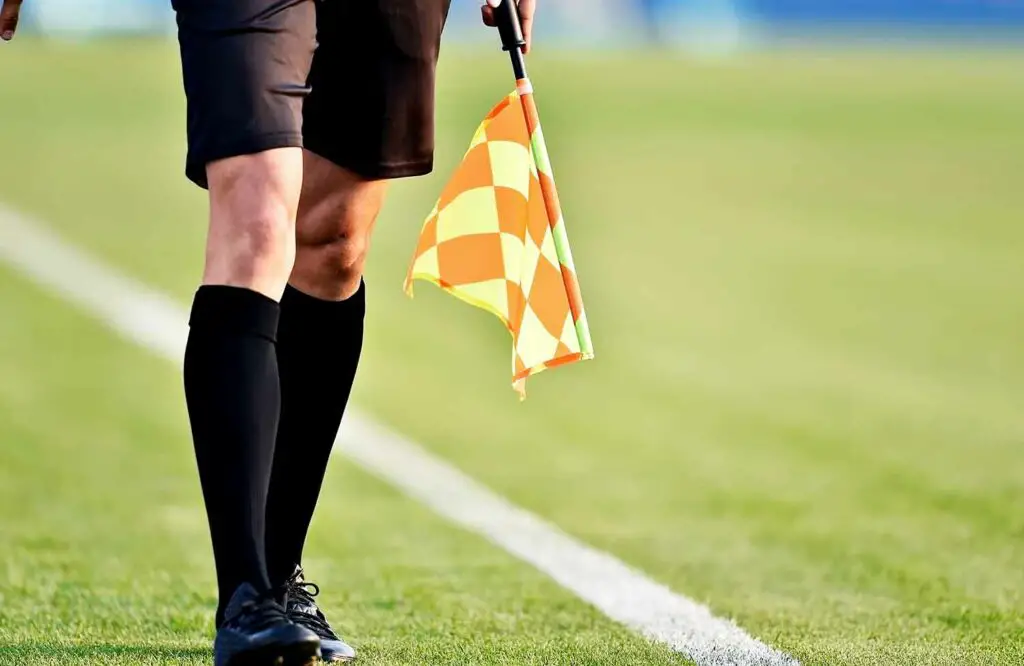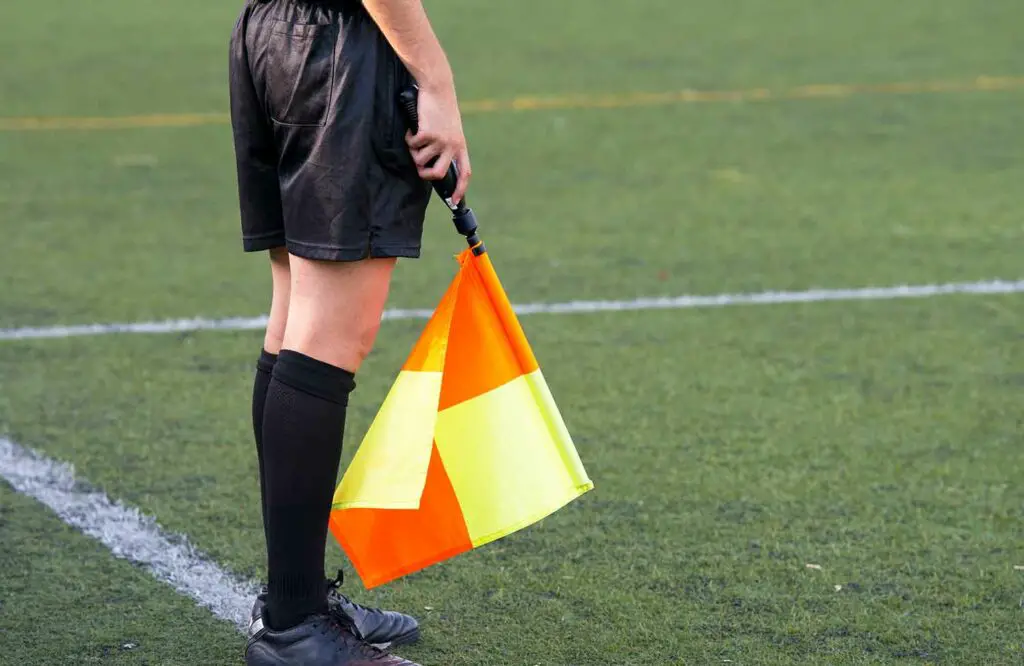Why Are Linesman Flags Different Colors?
Soccer is the most popular sport on the planet, and it is no wonder it captivates the masses like no other sport. With its history of over 150 years of contemporary soccer and competitions with legendary status both in the club and international soccer, billions of fans love talking about this sport.
But sometimes, during those conversations, odd questions can surface. Such as the topic of soccer referees and linesmen and the gear they have during the matches. While in recent years, we are even seeing referees with little sprays hoisted on their shorts to use before set-pieces, the linesmen are also part of the conversation. Why did linesmen use their flags in different colors?
Before assistant referees were officially introduced in soccer, linesmen were part of the refereeing team but had different-colored flags. That was for several reasons – to distinguish which of the two has seniority, but also for media purposes, so that journalists, commentators and pundits know which linesman is which if they plan to mention them in their reports.
But before we take a deeper dive into the different-colored linesman flags, we have to look at the colors themselves.
What Are The Primary Linesman Flag Colors?
Today, assistant referees have their flags as a combination of two colors – yellow and orange. They are usually checkered, but before their introduction, the linesmen usually had two different flags.

But before their introduction, the usual case was for one linesman to have a checkered red and yellow flag while the other would remain with a simple, plain yellow flag with no pattern. So what were all of the reasons for this to be the case?
Why Were Linesman Flags Different Colors?
Linesmen held flags of different colors at soccer matches for three main reasons. Firstly, it was to distinguish the seniority between the two linesmen. The second reason was so that it was clear which linesman would replace the referee. And finally, there were also the identification purposes which should not be underestimated.
Let’s take a closer look at all three of them.
Distinguishing seniority
In the days before the International Football Association Board (IFAB) changed the rules regarding their positions, linesmen were always of different seniority. The linesman with seniority over the other linesman would usually be in the role of a secondary referee.
Before the introduction of the fourth official, this linesman would not only have to do their job regarding the regular play, but he would also have to deal with substitutions, communicating with coaches and managers, and finding resolutions for conflicts in the dugout. That is why the senior linesman would be on the side of the pitch next to the dugout. With the greater responsibilities during the game, it made sense for a linesman with more experience to hold this role.
That was almost an unwritten rule, with the other linesman getting a plain yellow flag.
Replacing the referee
Before the introduction of the fourth official, the different-colored flags had another use. The senior linesman did not get such a flag just to distinguish seniority but also to serve as a clear cue which linesman would replace the referee if he got injured.
Such events of referees getting injured and being unable to officiate the entire match are rare, but they happen. The senior linesman was the one who was going to replace the referee if that happened. But things changed in the early 1990s with the introduction of the fourth official.
Identification purposes
And finally, there are also the identification purposes for which linesmen held different-colored flags. The media, journalists, commentators, pundits and even officials monitoring the quality of refereeing – all had valid reasons why they needed to distinguish the two linesmen.
Sometimes, the media workers would need to mention one of the linesmen in their reports or programs, and they needed to know which was which. That was especially the case when there was controversy in the matches, whether there were scuffles between the two sets of teams or something similar. Usually, it was then that linesmen would also jump in to help the referee. In such situations, where communication among the officials is key, it was also valuable to distinguish the two linesmen.

What Is The Correct Term For Linesman?
But ‘linesman’ is not the correct term to use for the officials on the sidelines of the pitch anymore. Since 1996, their official name is ‘assistant referees’. The IFAB switched the official terms for them, meaning that ‘linesmen’ are a thing of the past. Also, in 1991, another big decision from the IFAB made drastic changes to how we view the former linesmen, the assistant referees of these days.
It was in 1991 that the IFAB introduced the fourth official. The fourth official stands near the halfway line on the technical area side of the pitch, which is ultimately the side of the pitch where the two dugouts are situated. He is the one that monitors substitutions and the official game clock – these are not the responsibilities of the senior linesman anymore. Usually, the fourth official is a trained and experienced center referee, so if the main referee gets injured, the fourth official has to replace him, not the senior linesman as it used to be before 1991.
Why Are Linesman Flags Not Different Colors Anymore?
For all of the reasons mentioned above, there is no great need to distinguish between the senior or junior assistant referee. These days, both assistant referees hold the same flag, usually, a yellow-and-orange checkered one, which has become a standard in soccer. Both assistants now have almost identical responsibilities, as the fourth official rendered the senior linesman obsolete.
Since the changes in the 1990s, the two assistant referees are still distinguished. In the official match programmes, this is the case by the order in which they are named. Usually, they are mentioned as ‘assistant referee 1’ and ‘assistant referee 2’, with the first assistant being on the side next to the dugouts. His only remaining responsibility from the old days is to run back to the halfway line when a substitute is to be made and to hold his flag above his head, signaling a change. Everything else is up to the fourth official.
